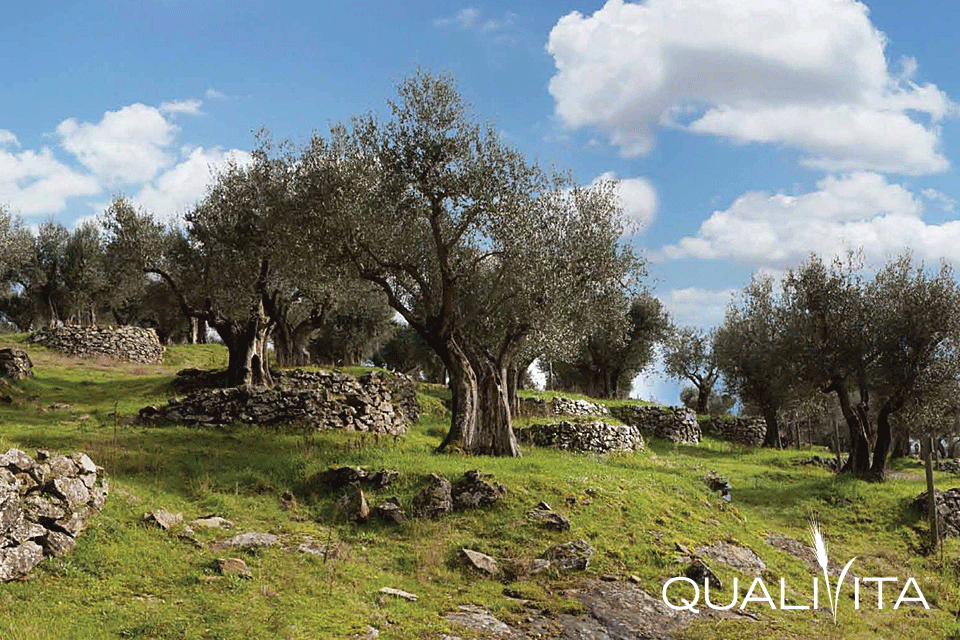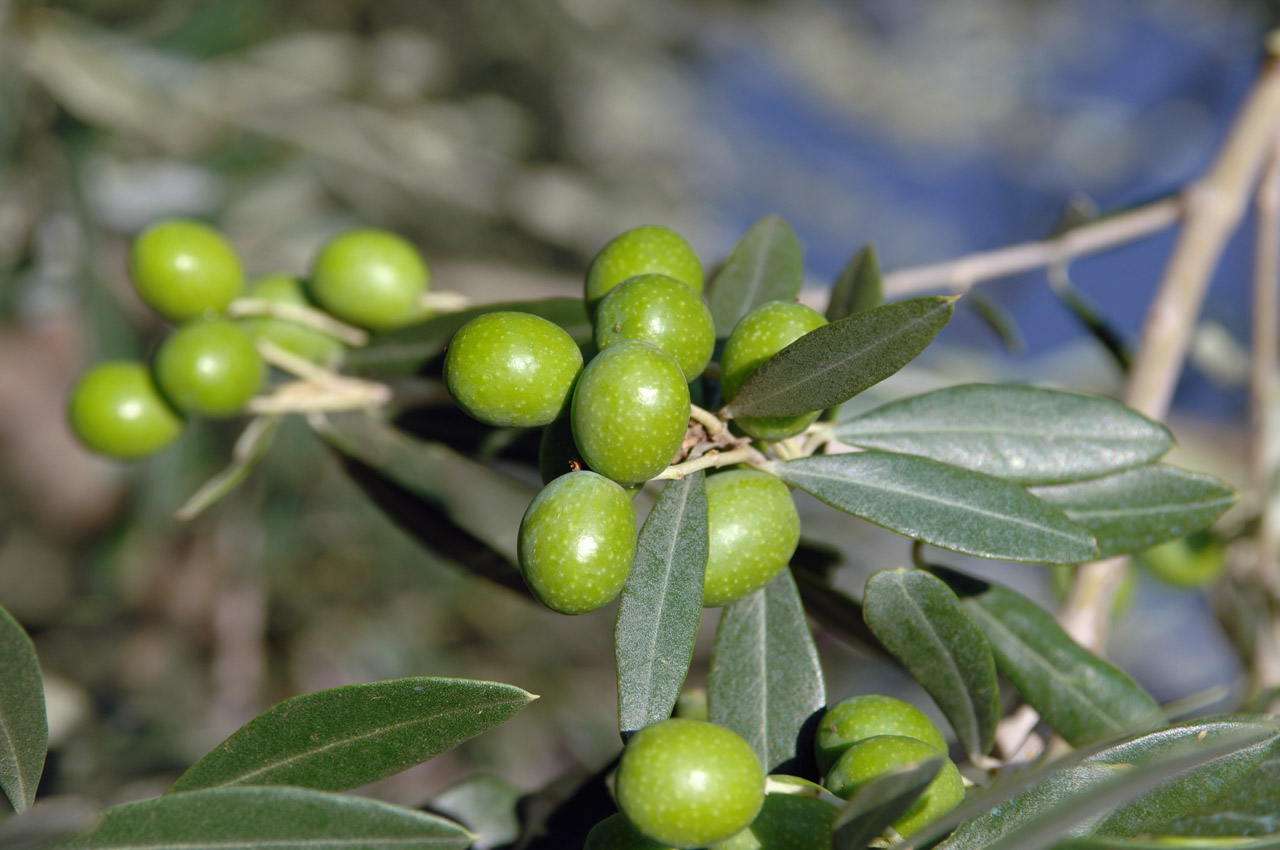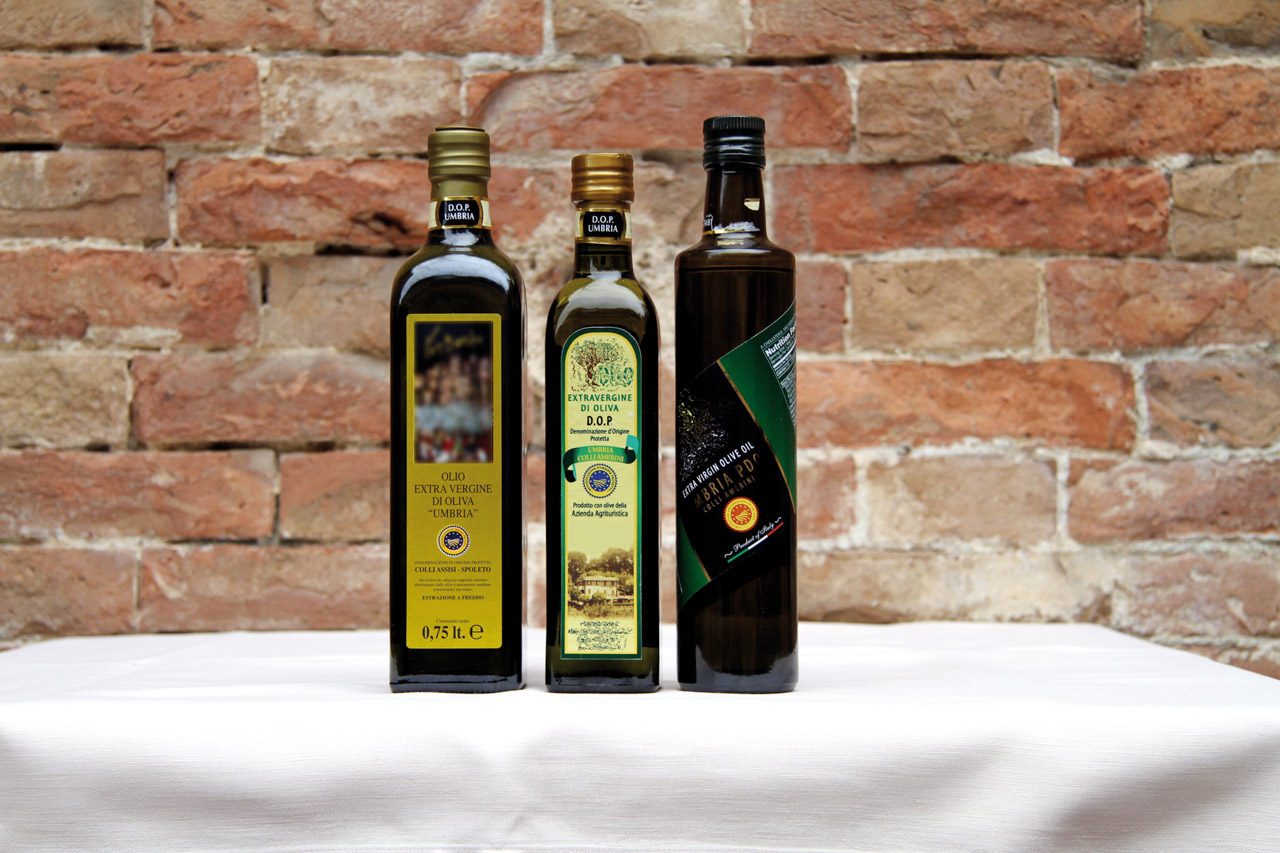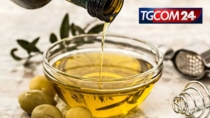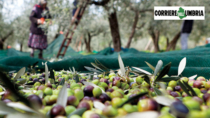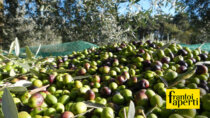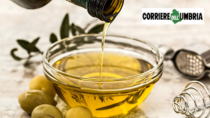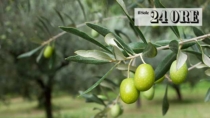Description
Umbria PDO extra virgin olive oil is obtained from the Leccino, Frantoio, Moraiolo, San Felice, Rajo and Dolce Agocia olive varieties. The designation must be accompanied by one of the following additional geographical specifications: Colli Assisi-Spoleto, Colli Martani, Colli Amerini, Colli del Trasimeno or Colli Orvietani.
Production Area
The production area of Umbria PDO extra virgin olive oil is within the entire territory of the Umbria region.
Production Method
The olives must be harvested directly from the trees, either by “raking” them off by hand or with the use of machinery, by December 31st of each year. The maximum oil yield must be between 17-21%, depending on the additional geographical specification.
Appearance and Flavour
Colli Assisi-Spoleto: obtained from the Moraiolo (at least 60%), Leccino and Frantoio (up to 30%) varieties; it is greenish yellow with a strong fruity smell and a fruity flavour, revealing strong bitter piquant hints. Colli Martani: obtained from the Moraiolo (at least 20%), San Felice, Leccino and Frantoio (at least 80%) varieties; it is greenish yellow with a mild to strong fruity smell and a fruity flavour, with mild or strong bitter piquant hints. Colli Amerini: obtained from the Moraiolo (at least 15%), Leccino, Frantoio and Rajo (up to 85%) varieties; it is greenish yellow with a mild fruity smell and a fruity flavour, revealing mild bitter piquant hints. Colli del Trasimeno: obtained from the Moraiolo (at least 15%), Leccino and Frantoio (at least 65%) varieties; it is green to golden yellow with a light to mild fruity smell and a fruity flavour, with slight or mild bitter piquant hints. Colli Orvietani: obtained from the Moraiolo (at least 15%), Frantoio (up to 30%) and Leccino (up to 60%) varieties; it is green to yellow with a mild fruity smell and a fruity flavour, with mild bitter piquant hints.
History
Olive cultivation in the production area of Umbria PDO extra virgin olive oil dates back to the Etruscans. Trading related to this practice is documented as far back as the 1st century BC, when Umbrian olive oil arrived as far as Rome. With the establishment of latifundia and church owned land during the Middle Ages, olive cultivation was revived after a long period of decline.
Gastronomy
Extra virgin olive oil is highly perishable and must be stored correctly in order to maintain its organoleptic properties. It should therefore be kept in a cool, dark place at a temperature between 14 and 18 °C, away from heat sources. It should be consumed within 4-6 months of pressing. Umbria PDO extra virgin olive oil has an intense taste and a fragrant aroma, making it an ideal condiment for either very flavoured simple dishes. It is excellent on bruschetta and grilled or roasted meat.
Marketing
The product is marketed as Umbria PDO extra virgin olive oil, accompanied by one of the following additional geographical specifications: Colli Assisi-Spoleto, Colli Martani, Colli Amerini, Colli del Trasimeno or Colli Orvietani. It is sold in glass or tin plate recipients of no more than 5 litres. The label must bear the indication Umbria, followed by the wording Protected Designation of Origin (PDO), the European symbol and the production year. The specific guarantee mark, which consists of a unique alphanumeric code that ensures the traceability of the product, and the wording “D.O.P. Umbria” must be on the packaging.
Distinctive Features
Umbria PDO extra virgin olive oil is characterised by a maximum acidity of 0.65 g per 100 g of oil, a panel test result higher than or equal to 7, and a polyphenol level of at least 100, 125 or 150 ppm, depending on the additional specification.




